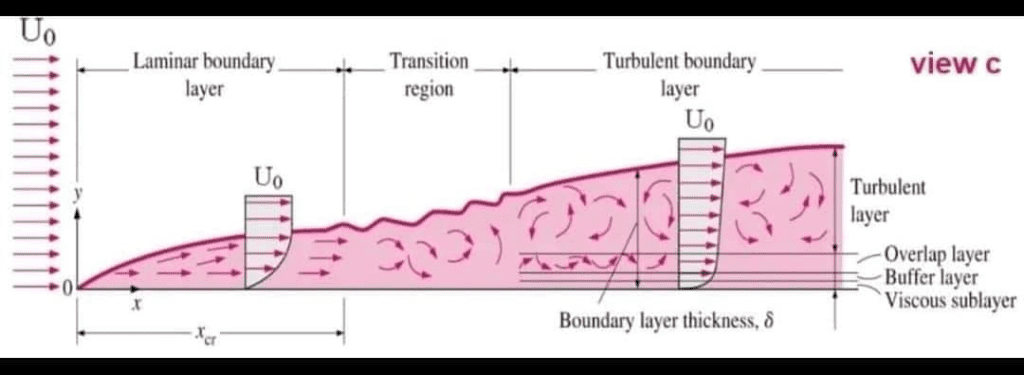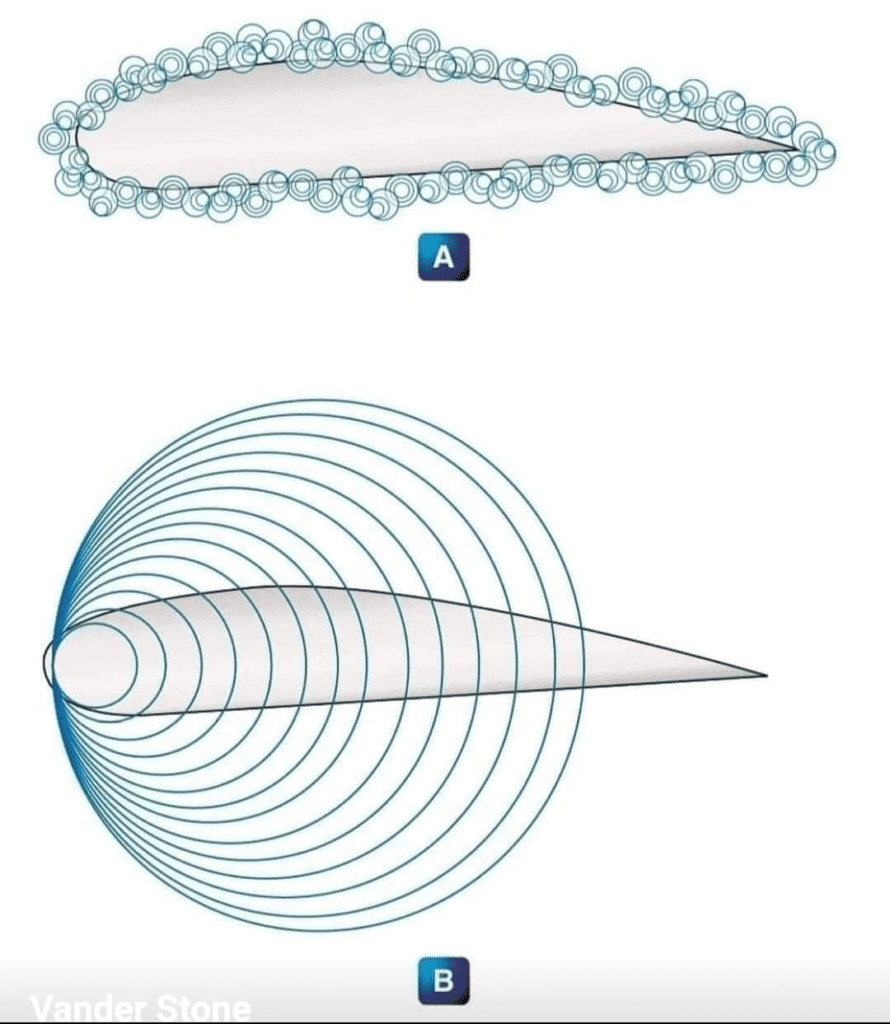
The boundary layer is a very thin layer of air lying over the surface of the wing and, for that matter, all other surfaces of the aeroplane. Because air has viscosity, this layer of air tends to adhere to the wing.

As the wing moves forward through the air, the boundary layer at first flows smoothly over the streamlined shape of the airfoil. This flow is called the laminar layer. (view c)

As the boundary layer approaches the center of the wing, it begins to lose speed due to skin friction and it becomes thicker and turbulent Here it is called the turbulent layer.(view c)
The point at which the boundary layer changes from laminar to turbulent is called the transition point. (view c)
Where the boundary layer becomes turbulent, drag due to skin friction is relatively high.(view c)
As speed increases the transition point tends to move forward. As the angle of attack increases, the transition point also tends to move forward. With higher angles of attack and further thickening of the boundary layer, the turbulence becomes so great the air breaks away from the surface of the wing.
At this point, the lift of the wing is destroyed and a condition known as a stall has occurred. In given Figure, view A shows a normal angle of attack and the airflow staying in contact with the wing.
View B shows an extreme angle of attack and the airflow separating and becoming turbulent on the top of the wing. In view B, the wing is in a stall.
Author – Vander Stone





